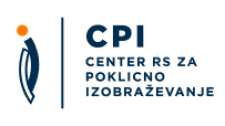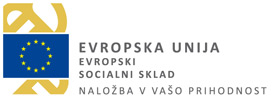Magister umetnostne zgodovine in …/magistrica umetnostne zgodovine in …
Selected qualifications
| Name of qualification | Name of qualification: Magister umetnostne zgodovine in …/magistrica umetnostne zgodovine in …Add to comparison |
|---|---|
| Translated title (no legal status) | Translated title: Master of Arts in history of art and... |
| Type of qualification | Type of qualification: Master’s degree |
| Category of qualification | Category of qualification: Educational Qualification |
| Type of education | Type of education: Master's education |
| Duration |
Duration of education:
2 years
|
| Credits | Credits: 120 credits |
| Admission requirements |
Entry conditions:
|
| ISCED field |
Field:
Arts and humanities
|
| ISCED subfield | subfield: humanities (except languages) not elsewhere classified |
| Qualification level |
SQF Level:
SQF 8 |
- analyse in depth, synthesise and envisage solutions and consequences,
- show in-depth mastery of research methods, procedures and processes in the field of history of art and develop critical and self-critical assessment,
- apply art history knowledge in practice,
- demonstrate autonomy and innovation in professional and academic work,
- additionally develop communication skills, particularly in the international environment,
- further develop ethical reflection and commitment to professional ethics,
- demonstrate cooperativeness and work in a group (including in an international environment),
- demonstrate in-depth recognition, evaluation and interpretation of art heritage and recent artistic production in their broader context,
- apply art history knowledge to other humanities or social science fields in an in-depth manner,
- apply acquired knowledge in practice in a wide variety of fields including work in institutions whose fundamental mission is history of art, applied and research projects, work in the field of media, tourism, business organisations, state authorities, etc.,
- demonstrate thorough knowledge and understanding of the basis, history and development of history of art as a discipline,
- resolve specific research problems through the application of scientific methods and procedures from the history of art field,
- demonstrate a thorough mastery of basic art history knowledge,
- integrate and apply knowledge from various fields,
- place new information and interpretations in the context of the history of art,
- demonstrate thorough knowledge of the general structure of history of art as a discipline and the connections between its subdisciplines,
- demonstrate thorough knowledge of methods of critical analysis and the development of theories, and apply them to resolve concrete research problems,
- develop in depth the skills that relate to the application of knowledge in the field of history of art,
- make in-depth use of information and communication technologies and systems in the field of history of art.
In order to progress to the second year, students must complete at least 21 credits from first-year course units. Students must also complete a specific number of credits in the other part of the two-subject study programme.
Third-cycle doctoral study programmes (SQF level 10)
Students complete the programme when they have completed all course units prescribed in both parts of the two-subject study programme and thus completed a total of 120 ECTS credits (60 credits in each part of the two-subject study programme).
University of Maribor, Faculty of Arts
URL
Awarding body URL:Upcoming event
International Conference: 10 years of Slovenian Qualifications Framework
International Conference: 10 years of Slovenian Qualifications Framework Brdo Congress Centre, Predoslje 39, 4000...
© Center RS za poklicno izobraževanje, 2018. All rights reserved
Sitemap General legal notice Cookie Policy Production: ENKI






